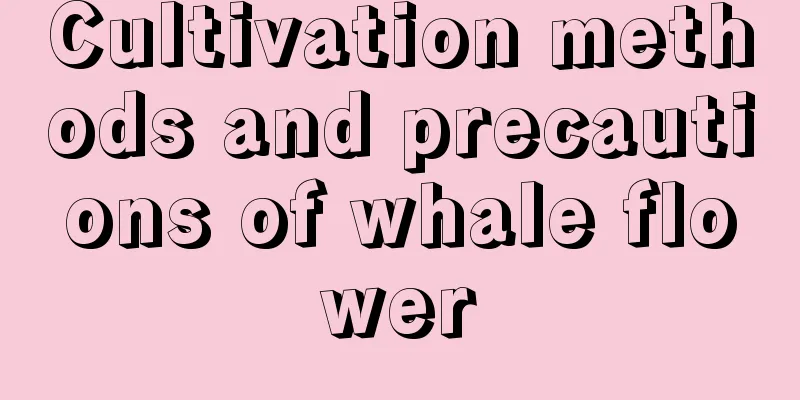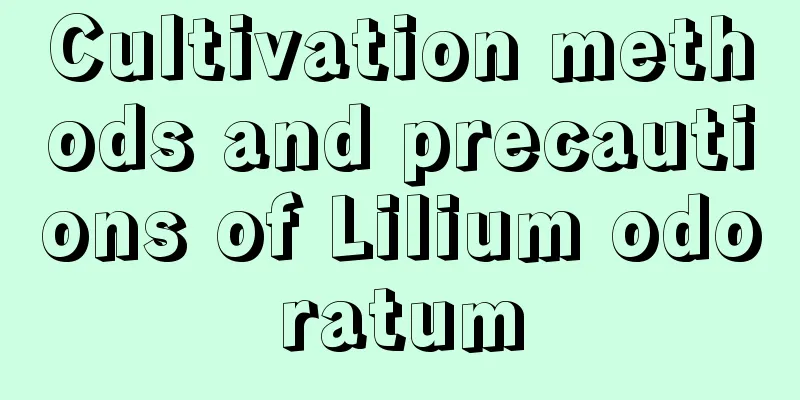Cultivation methods and precautions of whale flower

How to grow whale flowersoilWhale flower likes soil with good drainage and breathability. Therefore, it requires loose, fertile and well-drained soil. You can use a mixture of leaf mold, sawdust, and perlite, and add some fine sand to increase air permeability. Water and fertilizer managementWhale flower likes a humid environment. During the growing period, it needs to be given enough water to keep the soil in the pot moist, and at the same time, the humidity of the air around it should be increased by spraying water. When the temperature is high in summer and low in winter, reduce the water supply and keep the soil in the pot dry, which is more conducive to the growth of whale flower. Whale flower is a fertilizer-loving plant and should be given liquid fertilizer regularly. During the growing season, fertilizer can be applied every 15 to 20 days, preferably in small amounts and frequently. Whale flower is generally applied with more nitrogen and phosphorus fertilizers in spring and summer, and more potassium fertilizers in autumn. When the flower buds are growing, you can apply liquid fertilizer mainly composed of phosphorus fertilizer 1 to 2 times. Light and temperatureWhale flower likes warm, humid and semi-shady environment. The suitable temperature for growth is between 18 and 22°C. The wintering temperature should be above 10°C, and the daytime temperature in winter needs to be kept above 15°C. Whale flower likes bright indirect light, and the eaves or windowsills with good lighting are suitable breeding places. Normally, you can let the whale flower get more exposure to sunlight, but in the summer, you must be careful that the whale flower should avoid direct sunlight. Things to note when growing whale flowersReproduction methodWhale flower is often propagated by cuttings, division or sowing, which can be done in spring or autumn. Other considerationsDuring the cultivation of whale flower, pruning and trimming are required frequently. When the whale flower blooms, you should stop fertilizing, keep the soil drier, and reduce watering. |
<<: Cultivation methods and precautions of American mint
>>: Cultivation methods and precautions of Tumi
Recommend
The difference between Gardenia and White Toad
1. Basic characteristics 1. Gardenia. Its plants ...
How to grow the gypsophila macrophylla to make it flourish? Is it the same as lucky bamboo?
1. Maintenance methods 1. Light: It is shade-tole...
What are the benefits of watering flowers with honey water? It has the effect of fertilizing
Benefits of honey water for watering flowers Hone...
Bodhi tree cultivation methods and precautions
1. Watering Bodhi trees grow fastest when the tem...
A quick rooting method for cuttings of Prunus armeniaca
If you want the cuttings of Prunus armeniaca to t...
Can I grow red maple trees at home?
Can I grow red maple trees at home? You can plant...
Can peach blossoms be soaked in water and drunk?
1. Can I soak it? Many friends must know its orna...
Can roses be planted in pots?
Can roses be planted in flower pots? Roses can be...
How to prune cactus
When to prune cactus It is best to prune cacti in...
Which succulents are afraid of cold in winter? How to survive the winter safely?
1. Fear of cold The common succulent plants that ...
What season is suitable for growing coriander?
Coriander , as a widely used seasoning vegetable ...
Clivia species and pictures, what color is it
1. Varieties and pictures 1. Monk: It is also kno...
Cultivation methods and precautions of gladiolus
1. Breeding methods 1. Sunlight: Sunlight needs t...
There are four taboos in growing flowers at home! Pay special attention to the last one!
Taboo 1 Flowers are also living things. Growing f...
What fertilizers are suitable for garlic? Four kinds of fertilizers are suitable for growing garlic with high yield and large garlic heads.
Garlic is a fertilizer-loving plant and needs to ...









